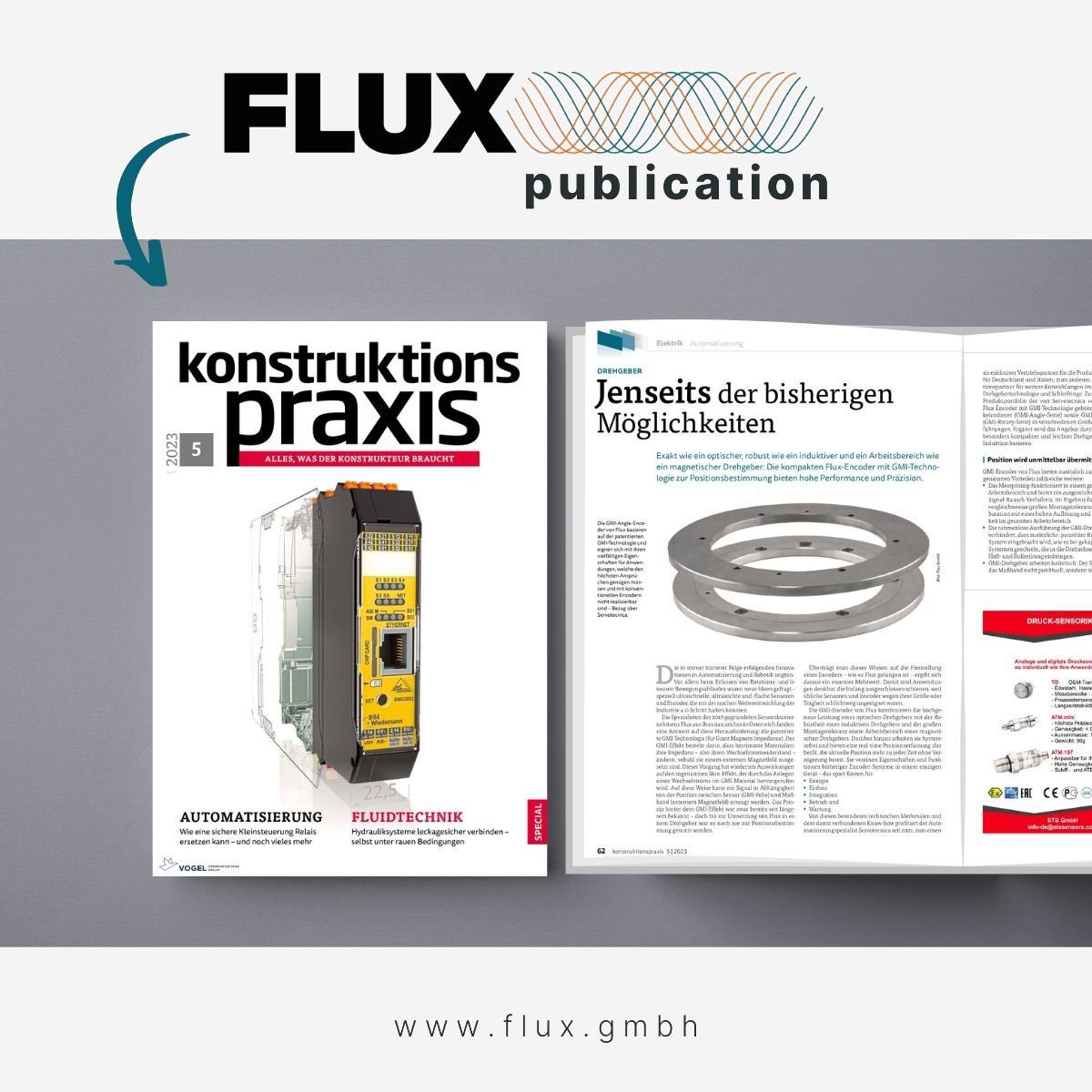Beyond existing possibilities
A recent article in the magazine “Konstruktionspraxis” discusses the advantages of the GMI® encoder technology and how it helps to optimize resources and application fields.
Exact like an optical, robust like an inductive, and a working range like a magnetic rotary encoder: The compact FLUX Encoders with GMI technology for position determination offer high performance and precision.
The innovations in automation and robotics, which are occurring at an increasingly rapid pace, have shown that new ideas were needed, especially for capturing rotational and linear motion sequences. Specifically, there was a need for ultra-fast, ultra-light, and ultra-thin sensors and encoders that could keep up with the rapid development of Industry 4.0. The specialists at FLUX, a sensor company founded in 2017 in Braunau am Inn, Austria, found an answer to this challenge: the patented GMI technology (Giant Magneto Impedance). The GMI effect occurs when certain materials change their impedance, that is, their alternating current resistance, when exposed to an external magnetic field. This process, in turn, affects the so-called skin effect, which is caused by applying an alternating current to the GMI material. In this way, a signal can be generated depending on the position between the sensor (GMI film) and the measuring tape (external magnetic field). Although the principle behind the GMI effect had been known for some time, it had never been used for position determination until FLUX implemented it in an encoder.
Applying this knowledge to the production of an encoder, as FLUX has successfully done, results in a significant added value. This opens up possibilities for applications that were previously considered impossible because conventional sensors and encoders were simply unsuitable due to their size or inertia. FLUX’s GMI encoders combine the highly accurate performance of an optical encoder with the robustness of an inductive encoder and the wide mounting tolerance and operating range of a magnetic encoder. Furthermore, they operate without hysteresis and provide real-time position detection, meaning that the current position is available without delay at all times. They combine the features and functions of previous encoder systems into a single device, which saves costs for:
• Energy
• Installation
• Integration
• Operation
• Maintenance.
Position is transmitted immediately
FLUX’s GMI encoders offer numerous additional advantages in addition to those already mentioned:
- The measurement principle works in a wider operating range and provides an excellent signal-to-noise ratio. As a result, it allows for relatively large mounting tolerances combined with high resolution and accuracy throughout the operating range.
- The frameless design of GMI rotary encoders prevents the introduction of additional parasitic friction into the system, as is the case with enclosed systems that introduce adhesive and rolling friction into the axis of rotation.
- GMI rotary encoders work holistically: The sensor scans the measuring tape not just at specific points but across the entire 360 degrees of rotation. This makes them largely immune to inaccuracies such as eccentricities or misalignment.
- As a real-time encoder, it also provides an output position that is independent of calculation time. It can immediately and without time uncertainty (jitter) transmit the current position to the control system with every query. This allows GMI encoders to maintain consistently high precision at both low and very high speeds. They are particularly well-suited for applications that require speed or torque control.
Wide range of applications
FLUX encoders are used, for example, as load and motor encoders in the joints of industrial robots and cobots. They are also employed in the latest generation of machine tools or in torque motors. With their exceptional accuracy and repeatability, they play a significant role in demanding manufacturing processes, such as semiconductor manufacturing. Their low mass makes them ideal for applications in gyro-stabilized, gimbal-mounted camera or instrument holders, commonly known as gimbals, which can be mounted on drones or manned aircraft.
© konstruktionspraxis
